Knee Wraps Vs. Sleeves: Which Is Better For You?
Our knees bear significant weight in many lifting exercises, especially squats. Whether you’re just getting serious about lifting or a seasoned weightlifter, knee health should be a top priority. The choice usually comes down to knee wraps vs. sleeves.
While they may appear similar on the surface, there are important differences in how they function and the impact they’ll have on your exercise. This article will do a comprehensive comparison to help you decide whether knee wraps or knee sleeves are better for you.
Knee Wraps Vs. Sleeves – The choice between knee wraps vs. sleeves comes down to exercise goals. Wraps act as a spring boost to your lift, useful in both weightlifting & powerlifting for pulling off heavy lifts or increasing your 1RM (one-rep max). Sleeves add warmth and compression to the joint, making lifts safer and more stable.
What Are Knee Wraps?
In essence, knee wraps are long strips of elastic material most commonly used in weightlifting & powerlifting. By wrapping tightly around your joint, they provide structural integrity and stability.
When fully wrapped, they should cover the area from your lower quadriceps to slightly below the joint. So, what do knee wraps do? When you engage in a lift such as the squat while wearing knee wraps, they function akin to a spring. This means that as you lower yourself down, the material of knee wraps stretches, accumulating elastic energy.
As you explosively rise back up to execute your lift, the material swiftly snaps back, releasing this stored energy and providing an added surge in speed and power. This effect directly impacts how much you’re able to lift.
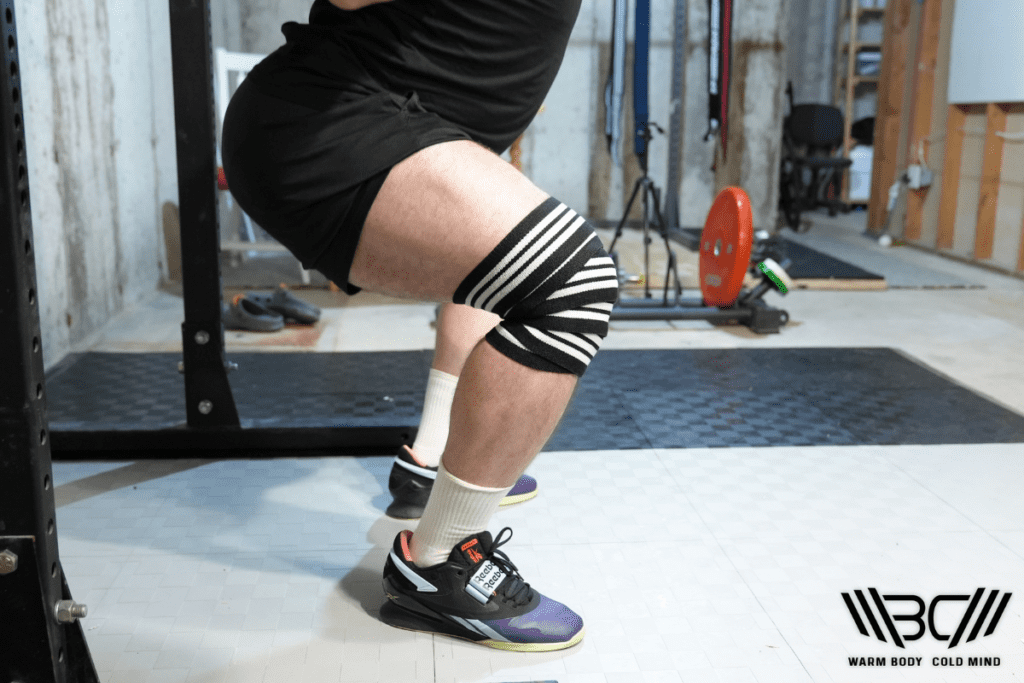
That said, knee wraps also have significant downsides, too. For one, they severely limit joint mobility, so they’re only good for stationary exercises. Second, the tightness of knee wraps can exert additional pressure on your joints.
As a result, it’s advisable to reserve their use for situations where you’re lifting at least 80% of your maximum (1RM), rather than using them frequently or for prolonged periods (such as extended sets with more than 1-2 reps). This is especially true if you have a knee injury and haven’t received approval from your doctor or physiotherapist to use knee wraps.
What Are Knee Sleeves?
Knee sleeves are an accessory meant to aid your knees during physical activity. As the name suggests, the “sleeve” is meant to enwrap the knee and provide 360-degree coverage. They’re made from tightly woven but flexible materials such as Neoprene, as they’re meant to fit snugly around the knee. This type of material allows them to provide essential compression and warmth to the joint without impeding movement.
Knee sleeves offer several key advantages to the wearer. Firstly, the warmth and compression stimulate blood flow, muscle oxygenation, and venous return, keeping the muscles active and energy generation high. Second, they can alleviate pain and discomfort caused by common knee problems such as osteoarthritis, runner’s knee, and tendonitis, making exercising and general activity feel more comfortable.
Third, they can aid in faster recovery by minimizing muscle soreness and exhaustion, allowing for a quicker return to exercise, which is especially useful for workouts with multiple sets or a quick rest during a sports game.

7mm Weightlifting Knee Sleeves
Discover the ultimate support with Warm Body Cold Mind knee sleeves providing stability and comfort.
That said, keep in mind that neither knee sleeves nor wraps should be used as a substitute for proper treatment and physical therapy. If you’re experiencing consistent pain or discomfort you should refer to a specialist.
Despite numerous benefits, knee sleeves do not in fact directly impact a person’s ability to lift more AKA make you stronger. However, by providing the knee joint with stability, support, and warmth, they can make you more comfortable and confident in your lift. This can indirectly lead to better exercise performance, helping you reach exercise goals faster.
Oleksiy Torokhtiy: Yes, I use a knee brace in my training. Their main task is to keep my knee joint warm. Sometimes I even add warming ointments to enhance the desired effect.
What’s The Difference Between Knee Sleeves And Knee Wraps
So, with everything we’ve covered so far, are knee sleeves or wraps better for you? If you’re still undecided, here are some important differences to know about:
1. Purpose
There are different scenarios when to use knee wraps or knee sleeves:
- Knee sleeves provide compression and warmth, supporting the entire knee joint in everything from daily activity to heavy exercise.
- Knee wraps offer a spring-like effect primarily meant to increase your 1RM — with the effect most noticeable at over 80% of your maximum
2. Design
You can tell knee sleeves & wraps apart by their appearance:
- Knee sleeves are a single-piece item that provides 360-degree coverage around the knee. They predominantly come with closed kneecaps for structural support, though open knee sleeves also exist. They’re also easy to slip on and off. They come in various sizes, with three standardized levels of thickness: 3mm, 5mm, and 7mm.
- Knee wraps are long strips of elastic material meant to be wrapped tightly. They come in different lengths, though the standard width is 3 inches. The user chooses the tightness based on their goals and preferences.
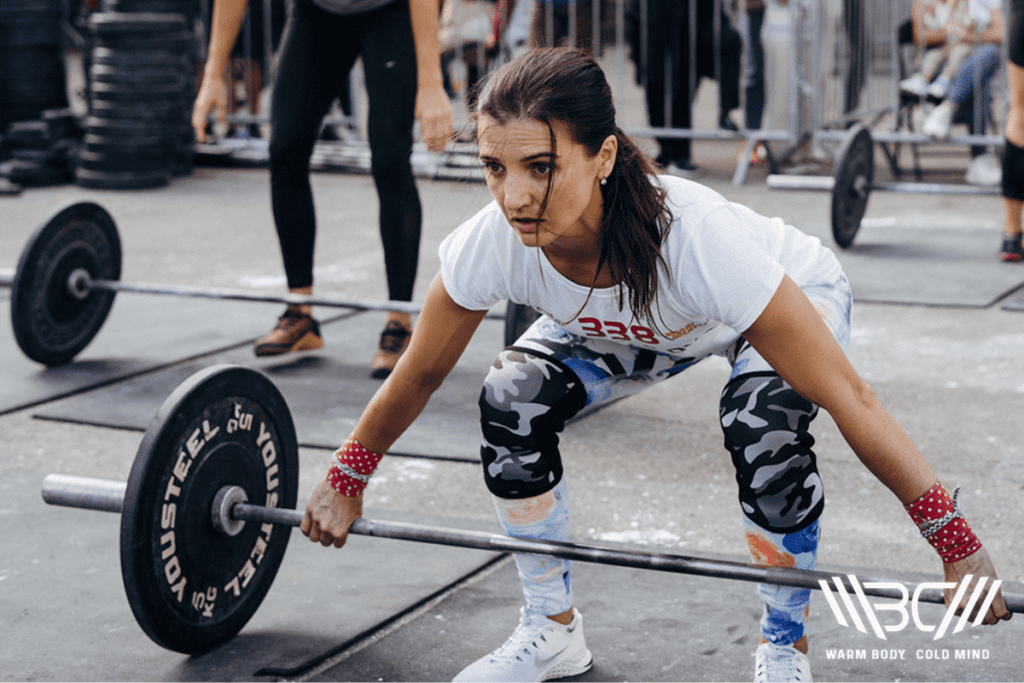
3. Tightness
Knee sleeves and knee wraps differ in their level of tightness and the way they provide support:
- Knee sleeves support a generalized area surrounding the knee joint. When you wear correct-sized sleeves, they’ll provide moderate compression. You’ll be able to feel their tightness, but it won’t feel restrictive. For the most part, you’ll retain the full range of motion of your knee bar some high mobility or agility moves.
- Knee wraps are more customizable. Although the general rule is to wrap them tight, the level of tightness is your choice. Generally, the tighter they’re wrapped, the more energy they’ll store and the higher the spring effect. However, this also makes them less comfortable and more restrictive, which can also carry potential risks to the joint if worn too much.
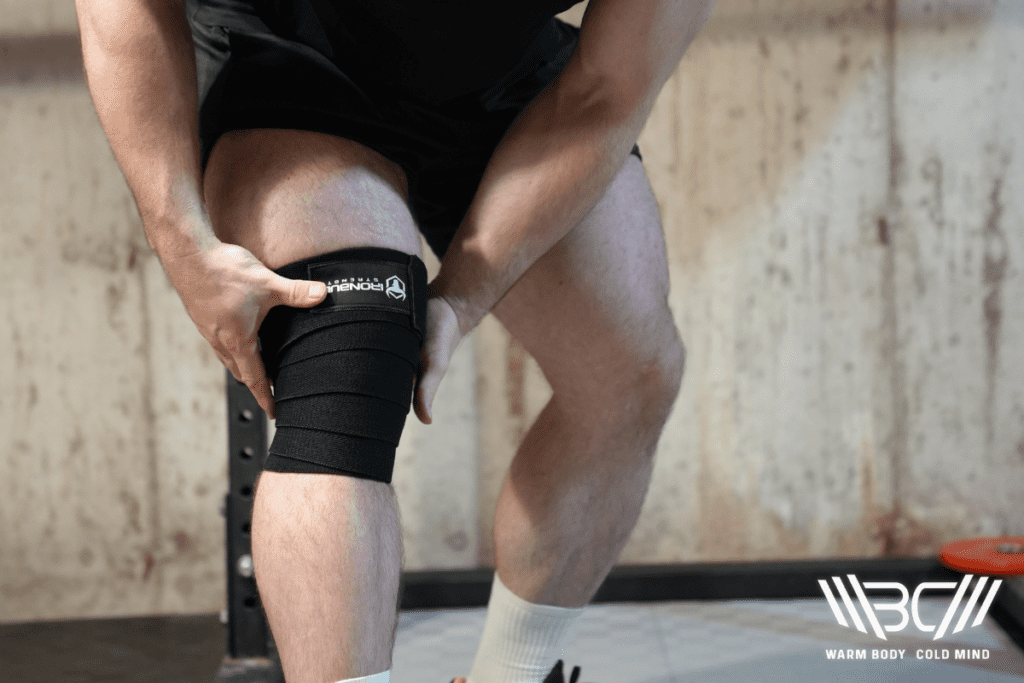
4. Material
Sleeves & wraps are made from different material:
- Knee sleeves are made from tightly woven, flexible materials like Neoprene, offering a snug fit without restricting joint mobility.
- Knee wraps are made from elastic materials, most notably meshes of cotton and nylon.
How They Are Used?
Knee sleeves are intuitive for use. They’re easy to slide on and the correct fit should be obvious both visually and by feel. Start by folding them outward in half and sliding them up your leg to your knee. Then unfold them over the joint and use small movements to adjust them if necessary.
Knee wraps require wrapping each time you use them. Start wrapping from the back of your knee, making sure each wrap slightly overlaps the previous one. It should be fairly evenly tight across the whole area. After the lift is complete, it’s recommended to release the wraps and let the joint move freely, before retightening them for your next attempt.
Ease of Use
Knee sleeves take the cake over knee wraps when it comes to ease of use. For starters, knee wraps need to be wrapped every time you intend to use them. Second, since you wrap them yourself, it may take a few attempts to get right.
Preferably, you also want to re-wrap them before each attempt. Meanwhile, knee sleeves just need to be slid on and positioned on the knee. Once you’ve done it a few times and break in the material a bit, it’s as easy as putting on your socks.

Pro Tip:
Both knee sleeves and knee wraps should be worn on exposed skin, not over your gym clothing.
Type of Exercises They’re Suitable For
1. Knee Wraps Exercises
Knee wraps are essential and only used in weightlifting exercises of movement of a similar static nature while lifting heavy objects. The most notable exercises where lifters use knee wraps are squats.
2. Knee Sleeves Exercises
As discussed so far, knee sleeves can be used for a variety of activities. To avoid repetition, pretty much any physical activity that you do on your legs can be improved with knee sleeves.
Knee Sleeves Pros & Cons
Pros
- Near-unlimited versatility
- Obvious health benefits, no noteworthy drawbacks
- Easy to put on and off
- Can be used in daily life activities (walking, gardening, standing for extended periods)
- Useful for recovery
Cons
- Non-adjustable, you need to buy a pair that fits
- Overuse may lead to overreliance
Subscribe!
The latest reviews of must-have home gym training equipment, apparel, and supplements that will enhance your performance and bring you new results.
Who Should Wear Knee Sleeves?
Knee sleeves aren’t useful just for improving exercise performance. Oftentimes, they’re recommended as a medical assistance tool, both as a way to prevent and deal with knee issues. With that in mind, here’s who’d benefit the most from wearing them:
Athletes/Sports players – knee sleeves are helpful for a variety of sports, particularly those where your knees do a lot of work for jumps and directional and speed changes. Think basketball, volleyball, and even something like skateboarding or snowboarding.
Runners/Hikers/Distance Walkers – Regardless of whether you’re doing it recreationally, as a means to lose weight, or training for a competition, knee sleeves could be helpful for many types of walking or running activities.
Weightlifters/Powerlifters/Cross-trainers – as mentioned continuously throughout the article, people who do resistance training should take care of their knees. This primarily includes weightlifters, powerlifters, and cross-trainers that lift frquently. Additionally, people whose jobs also involve lifting and carrying heavy objects, i.e. construction workers, factory workers, movers, etc.
People under therapy & Elderly – knee sleeves are often prescribed during physical therapy as a remedy for post-injury or surgery symptoms like pain. Similarly, it can be prescribed if you have a health condition affecting your knees, such as arthritis, which most commonly affects us as we grow older. Thus, knee sleeves can be a life-changer for the elderly, helping them get back into daily activities.
Sergiy Putsov: In my training experience, I’ve found it best to use knee sleeves during heavy squat sessions and also I put it on my shin during all pulling exercises to protect my skin from aggressive knurling.
Best Knee Sleeves We Recommend – Warm Body Cold Mind Weightlifting Sleeves
The Warm Body Cold Mind Weightlifting Sleeves are created from decades of weightlifting experience at the highest level. They’re made from a durable and breathable Neoprene. At 7mm thickness, they follow standardized competition sizing and are geared primarily toward weightlifters.
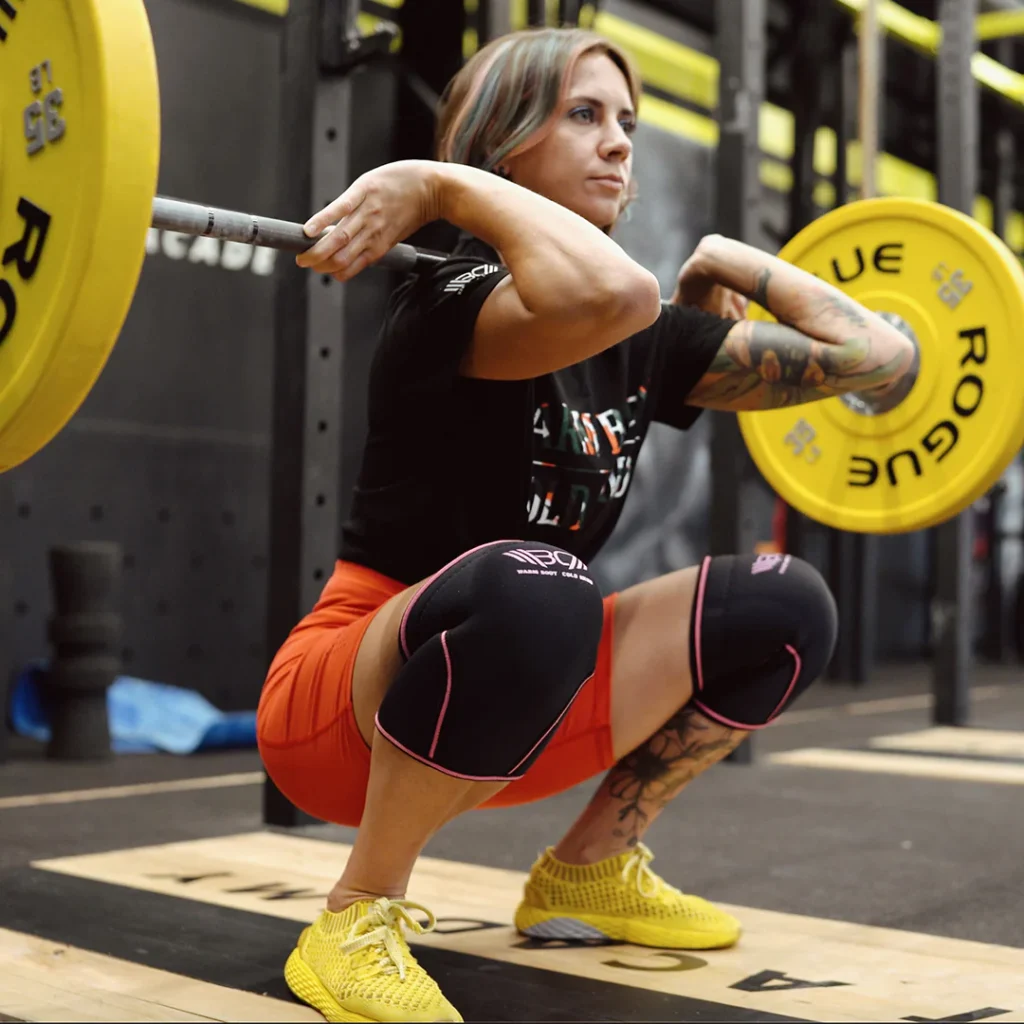
Thanks to a contoured, anatomical design, the sleeves offer support that meets medical-grade standards, while allowing for a full range of movement. The sleeves are unisex and range in size from S to 3XL, with a simple but attractive black design with contrasting colors. Moreover, it’s hard to find knee sleeves of this quality at this price point.
Knee Wraps Pros & Cons
Pros
- The spring effect may directly impact your ability to lift more
- The fit and tightness is customizable
Cons
- Very movement restrictive
- Not much use outside its single purpose
Who Should Wear Knee Wraps?
While knee wraps have a more niche usage than knee sleeves, there are still a few places where they can be applied effectively. Here’s who might want to look into knee wraps:
Powerlifters – whether you’re a competitive powerlifter or do it for your peace of mind, knee wraps can help you attempt heavier lifts. Just be careful not to overuse them
Bodybuilders – bodybuilders and similar athletes who primarily exercise for hypertrophy (muscle growth) often lift heavy, similar to powerlifters.
Strongmen – strongman competitions involve a variety of atypical exercises, but the jist is always lifting or moving heavy objects, so there’s a lot of pressure on their knees. When they’re not preparing for a competition, they often resort to powerlifting to keep up their strength and mass.
Best Knee Wraps We Recommend – RDX K4 Weightlifting Knee Wraps
If you want an immediate boost in performance for your next personal record squat, get the RDX K4 weightlifting knee wraps. These are premium-quality wraps at a more than fair price. Made from highly stretchable and breathable cotton, they’ll keep your knees secure while remaining comfortable to wear.
The 2 meters in length provide ample room for wrapping, and the secure hook & loop closure will keep them firmly in place. RDX K4 wraps comply with the OEKO-TEX® Standard 100, which guarantees that they are made from high-quality, non-hazardous, and sustainable materials. Furthermore, they’re approved for use in World Powerlifting Congress competitions.
Summary
Here’s a quick table summary of knee sleeves vs. wraps:
| Tool | Knee Wraps | Knee Sleeves |
| Main Purpose | Power output increase | Compression, Stability, & Warmth |
| Tightness | Tight-fitting, customizable | Moderate |
| Joint Mobility | Restrictive | High |
| Design | Long strip, customizable fit | Single-piece, open/closed kneecap |
| Material | Elastic | Flexible |
| Ease of Use | Requires knowledge of how to wrap | Easy, just slide on |
| Suitable Exercises | Static, heavy lifts | Versatile |
| Recommended For | Powerlifters, bodybuilders, strongmen | Weightlifters, runners, athletes |
| Best Choice | RDX K4 Weightlifting Knee Wraps | Warm Body Cold Mind Weightlifting Sleeves |
Pro Tip: Having both options at your disposal is always a good choice. Use your knee sleeves regularly when you lift, and swap out for your wraps when you attempt your maximum lifts.
FAQ
Is Using Knee Wraps Or Sleeves Considered Cheating?
Anecdotally, training raw has its benefits, but it’s never a bad thing to protect your body. However, if you have competitive aspirations, you should train according to your preferred lifting conference rulebook.
For example, the International Powerlifting Federation (IPF) Technical Rule Book allows the use of either knee wraps or sleeves in all of their sanctioned competitions. That said, some powerlifting competitions may forbid the use of knee wraps due to the boost they give.
Should I Wear Knee Wraps or Sleeves for Powerlifting?
This largely depends on your exercise goals and the state of your knees. There are very few scenarios where knee sleeves are detrimental — they add an extra layer of security and enhance your lifting performance. One exception might be when you prefer to train “raw,” as some say.
Knee wraps provide an immediate boost in lifting strength due to their elastic rebound. However, evidence suggests they are most effective for lifting personal maximums, and that prolonged use can strain the knees. Therefore, it’s advisable to reserve them for 1RM (one-rep max) attempts.
Will Knee Sleeves Make Me Stronger?
There’s no evidence that knee sleeves will make you stronger directly — as in, you put them on and suddenly lift more. That said, the positive effects knee sleeves have, including the added warmth, compression, and blood flow can make your lift more stable and confident, giving you the boost you need to break personal records.
Conclusion
This concludes the knee wraps vs. sleeves head-to-head. To summarize, knee sleeves are more commonly used as they offer both support and functionality. The compression effect provides mild structural support, boosted circulation, and warmth to the joint, keeping it stable and comfortable both during and after exercises.
On the other hand, knee wraps are best for one specific purpose, immediately boosting your lifting power output. That said, they’re the only competitive viable tool that does so. We’d love to hear from you as well.
Have you used either knee sleeves or knee wraps in your workouts? Also, let us know what your favorite weightlifting exercise is. Write a comment down below and remember to follow us on social media for more valuable fitness content.
References:
- Alexandria A Trypuc, “Effects of Knee Sleeves on Knee Mechanics During Squats at Variable Depths,” Master of Science in Education (MSEd), Thesis (2018), Human Movement Sciences, Old Dominion University
- “Approved list of Personal apparel and equipment for use at IPF sanctioned competitions”, International Powerlifting Federation https://www.powerlifting.sport/fileadmin/ipf/data/federation/Approved__List_2019-2022_Final.pdf (accessed Nov. 8, 2023)
- “Arthritis of the Knee”, Cleveland Clinic https://my.clevelandclinic.org/health/diseases/21978-arthritis-of-the-knee (accessed Nov. 8, 2023)
- Dennis-Peter Born, Billy Sperlich, Hans-Christer Holmberg, “Bringing Light into the Dark: Effects of Compression Clothing on Performance and Recovery,” International Journal of Sports Physiology and Performance 8, no. 1 (2013), 4-18.
- Hunter J. Bennett, Alexandria Trypuc, Kevin A. Valenzuela, Zachary A. Sievert, “Wearing knee sleeves during back squats does not improve mass lifted or affect knee biomechanics,” Human Movement 22, no. 2 (2021), 32–42
- Nahdatul Aishah Mohd Sharif, Siew-Li Goh, Juliana Usman, Wan Kamarul Zaman Wan Safwani, “Biomechanical and functional efficacy of knee sleeves: A literature review,” Physical Therapy in Sport (Journal) 28 (2017), 44-52
- Shane F. O’Riordan, Rod McGregor, Shona L. Halson, David J. Bishop, James R. Broatch, “Sports compression garments improve resting markers of venous return and muscle blood flow in male basketball players,” Journal of Sport and Health Science 12, no. 4 (2023): 513-522.
Author: Sergii Putsov
PhD in Sport Science, Olympic weightlifting, Strength & Conditioning coach and fitness expert
Sergii Putsov is a professional weightlifter with over 20 years of experience and multiple national medals. He was a member of the National weightlifting team, competing in the 94 kg weight class. Sergii holds a master’s degree in Olympic & Professional Sport Training and a Ph.D. in Sport Science. After his athletic career, Sergii transitioned into coaching and is now responsible for designing training programs, writing blog articles, providing live commentary for international weightlifting competitions, and hosting sport and fitness seminars worldwide.

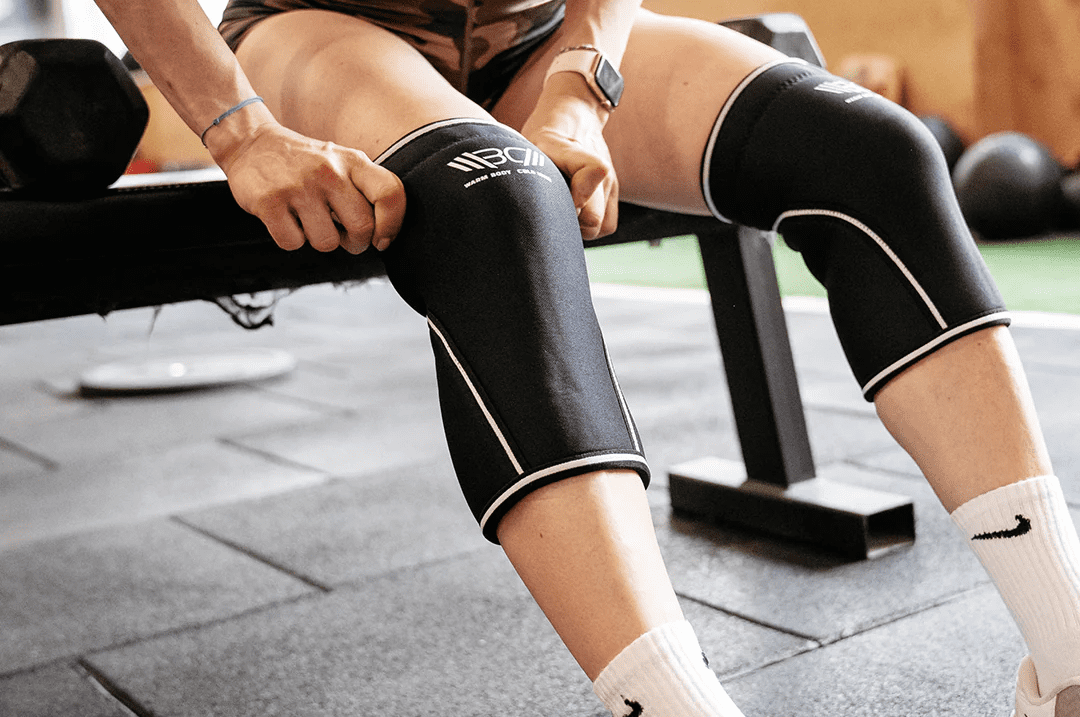
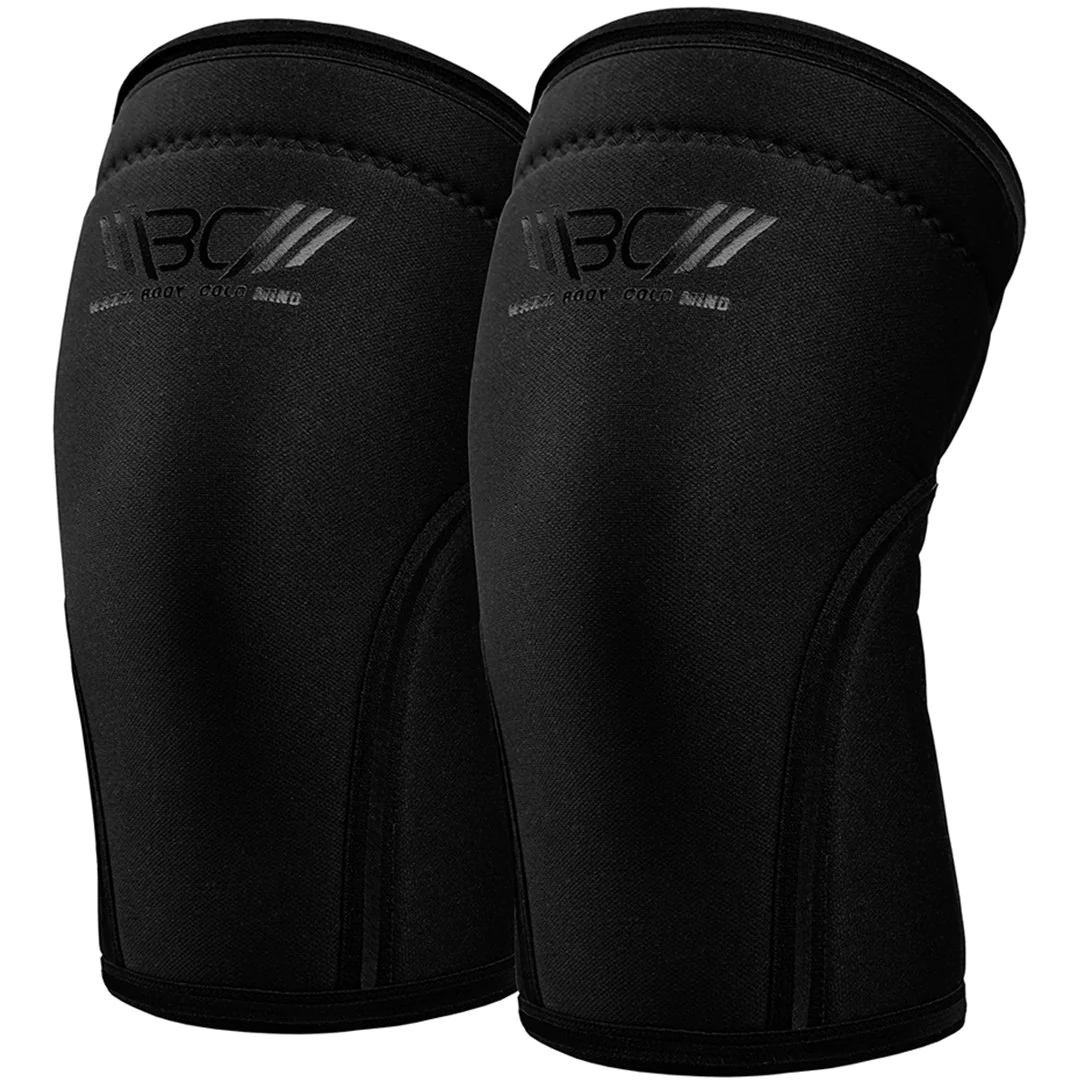
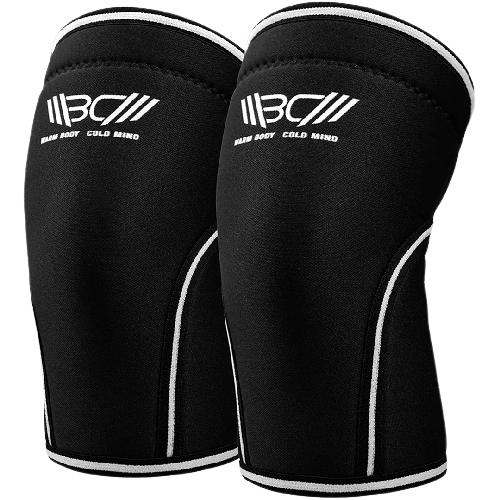
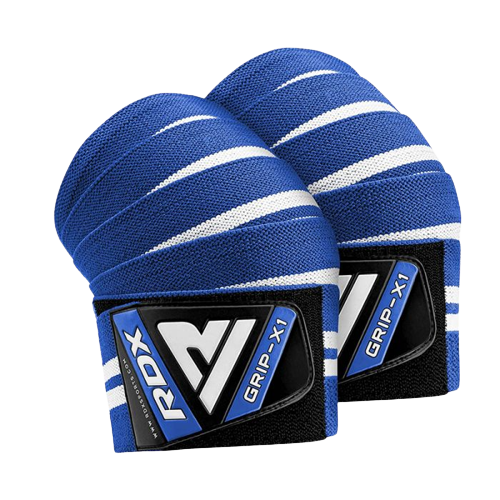

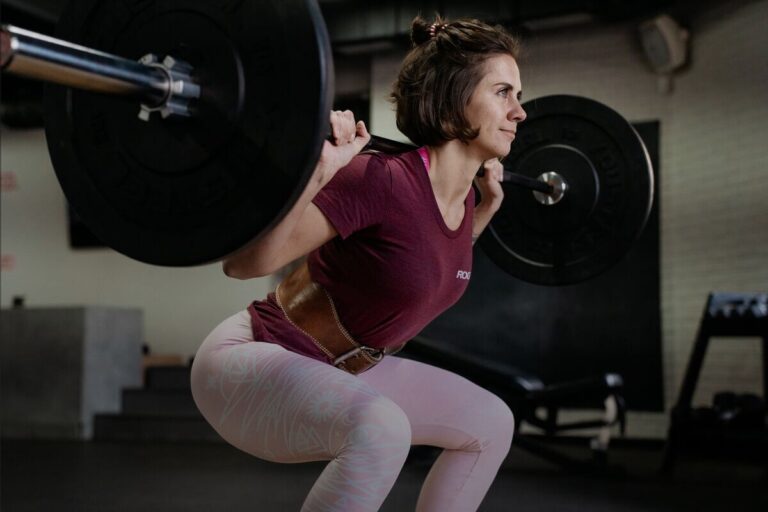
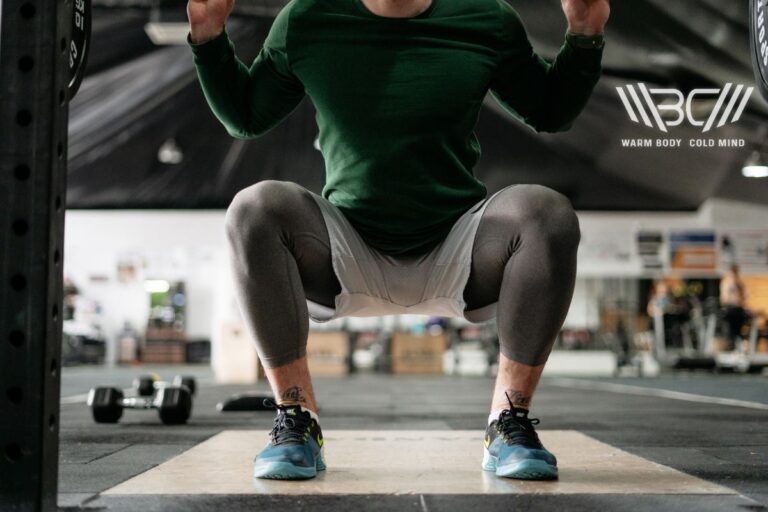
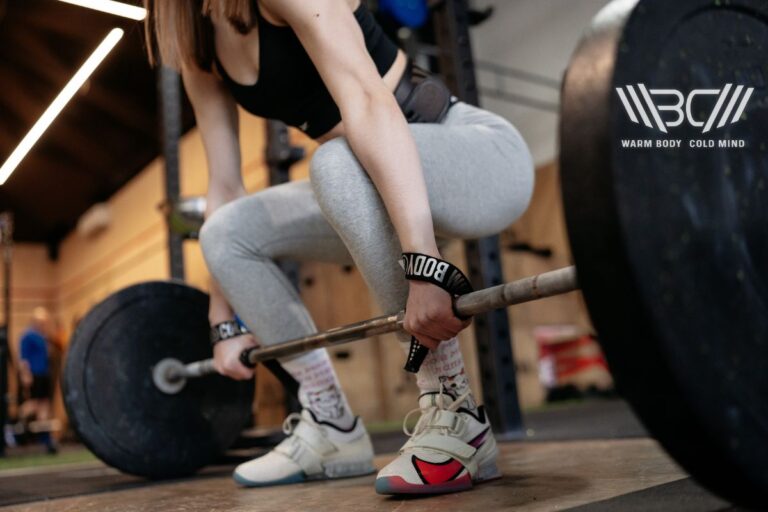
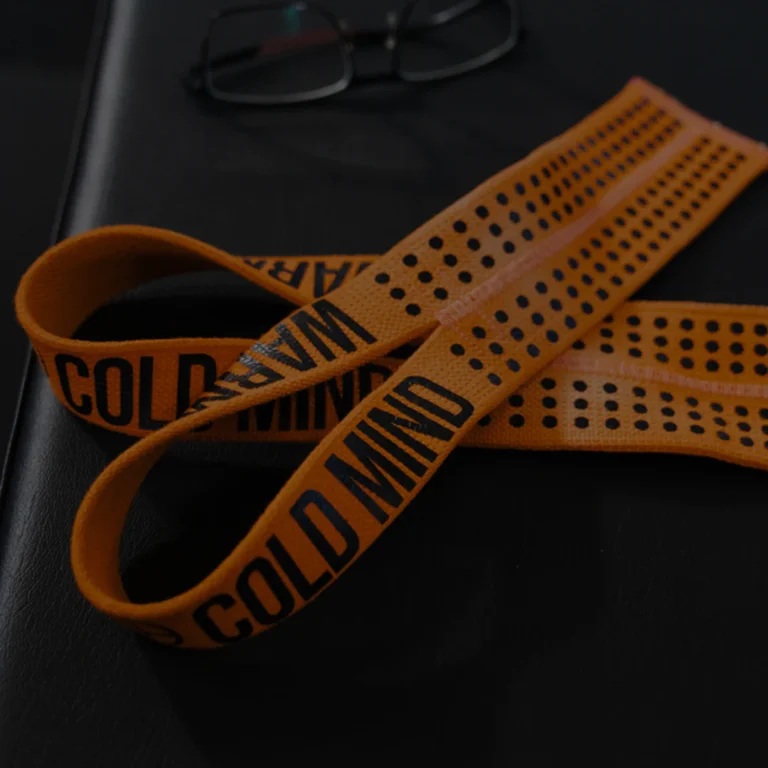
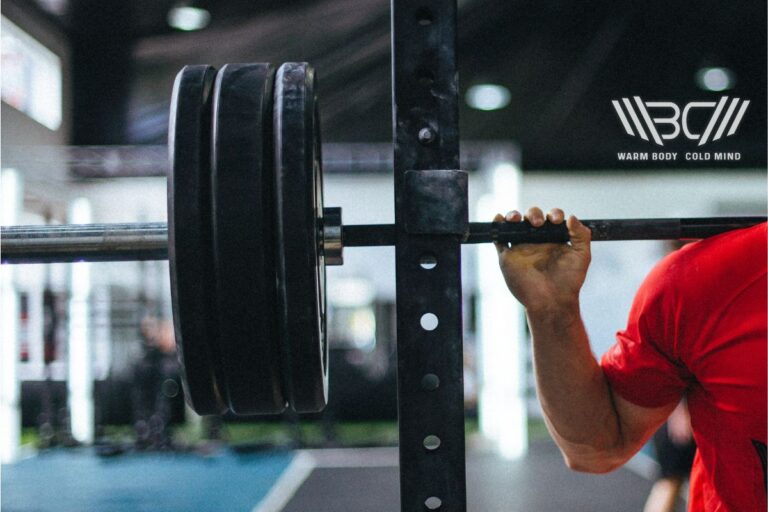
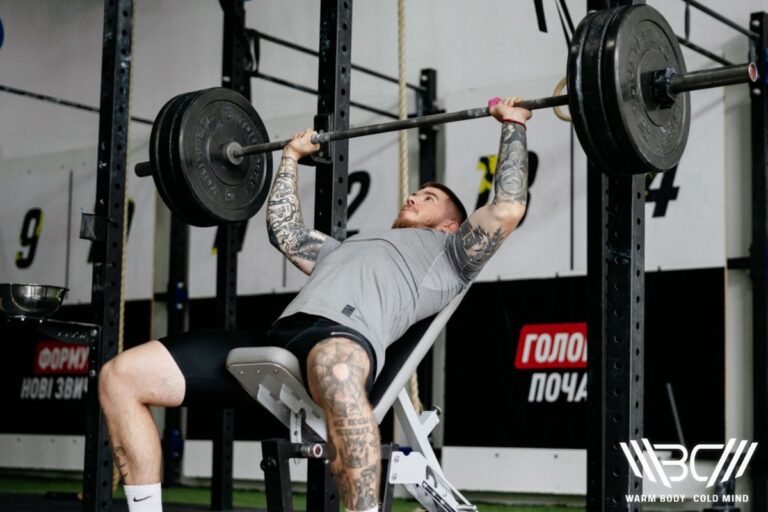
I choose knee wraps for powerlifting. It seems to me that this way I have better control over the tightening force on my leg. Although there are many athletes in the gym who wear knee sleeves, so it’s all about individual comfort for everyone.